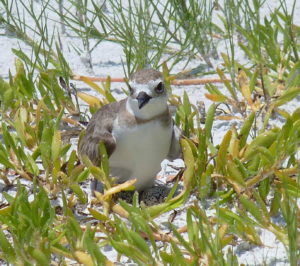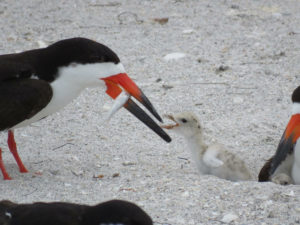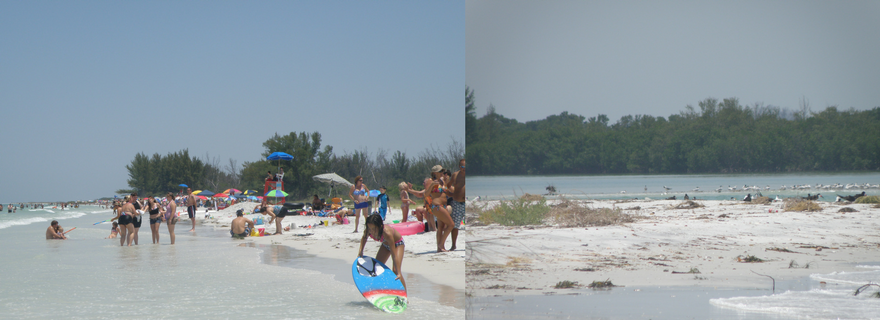
Holiday weekends at Fort De Soto County Park typically mean wall-to-wall people on the beach adjacent to the nature preserve protected by bird stewards.
A ground-breaking bird steward program started by St. Petersburg Audubon more than a decade ago is expanding to important shorebird nesting areas across Florida. (Learn more about being a bird steward here.)
“It started out as an all-volunteer program but we could clearly see the difference that stewards are making for beach-nesting birds,” said Holley Short, program manager for Audubon Florida. “We’ve expanded to the Panhandle, Sarasota and Lee counties, and are making the bird stewarding initiative more formal with a series of training sessions for volunteer bird stewards.”
hree training sessions are planned for Pinellas County:
- March 17, 8 a.m. at the Fort De Soto North Beach concession stand. The focus will be on protecting birds on the nearby year-round preserve located on a peninsula adjacent to one of the region’s busiest beaches
- May 12, 8 a.m. at the Tiki Gardens parking lot on Indian Shores. Participants will learn about protecting birds nesting in roped-off areas often surrounded by beach-goers.
- The date on the third event at Three Rooker Park and Honeymoon Island, where some areas are accessible only by boat is still to be determined.

Photo courtesy Audubon Florida
Both experienced and beginning bird stewards are invited to the events in hopes of setting up mentoring partnerships where experienced stewards work with novices, Short said. “No one has done the research on what works best but some of these stewards have been volunteering for years and they have a very good handle on how to deal with different types of people.”
The training sessions also will include a presentation by Morgan Parks, Florida Fish and Wildlife Conservation Commission biologist. “We want to put a face on the FWC and all they’ve done for beach-nesting birds and make sure that our stewards know the laws and regulations protecting them – and when and how to contact FWC law enforcement,” Short said.
“Bird stewards aren’t police officers – we’re there to educate and then walk away and call for assistance if necessary.”

Bird nesting season officially began on March 1, but bird stewards are most critical during holiday weekends over the summer, Short adds. “We know that families traditionally spend those weekends together but that’s when the beaches have the most people too, and nesting season is in full swing.”
Luckily, many beach-going families have spoken with bird stewards over the years and understand the importance of respecting the birds’ space. “If people get too close to nesting birds, they’ll fly away and leave their eggs in the hot summer sun or their chicks unprotected from predators. If people understand that, they’ll usually respect it.”

Bird stewards on municipal beaches wear brightly colored t-shirts emblazoned with the words “Ask Me About the Birds,” because most people are curious and want to help, Short said. “We need to explain to people that there really is enough beach for all of us – and who could not love those chicks? You can see it click in their minds – they watch the baby birds, they fall in love and they’ll tell their family and friends who then approach our volunteers with questions.”
Attending the training is not necessary if you would like to participate later in the year, but you must pre-register with your preferred location. To participate, contact Short at hshort@audubon.org or 352-455-8993.
Learn more about beach-nesting birds at http://www.myfwc.com/shorebirds or http://www.flshorebirdalliance.org/media/6851/Sea_Turtle-BNB_Pamphlet.pdf for a printable pamphlet describing the birds and where they are most likely to be seen.
